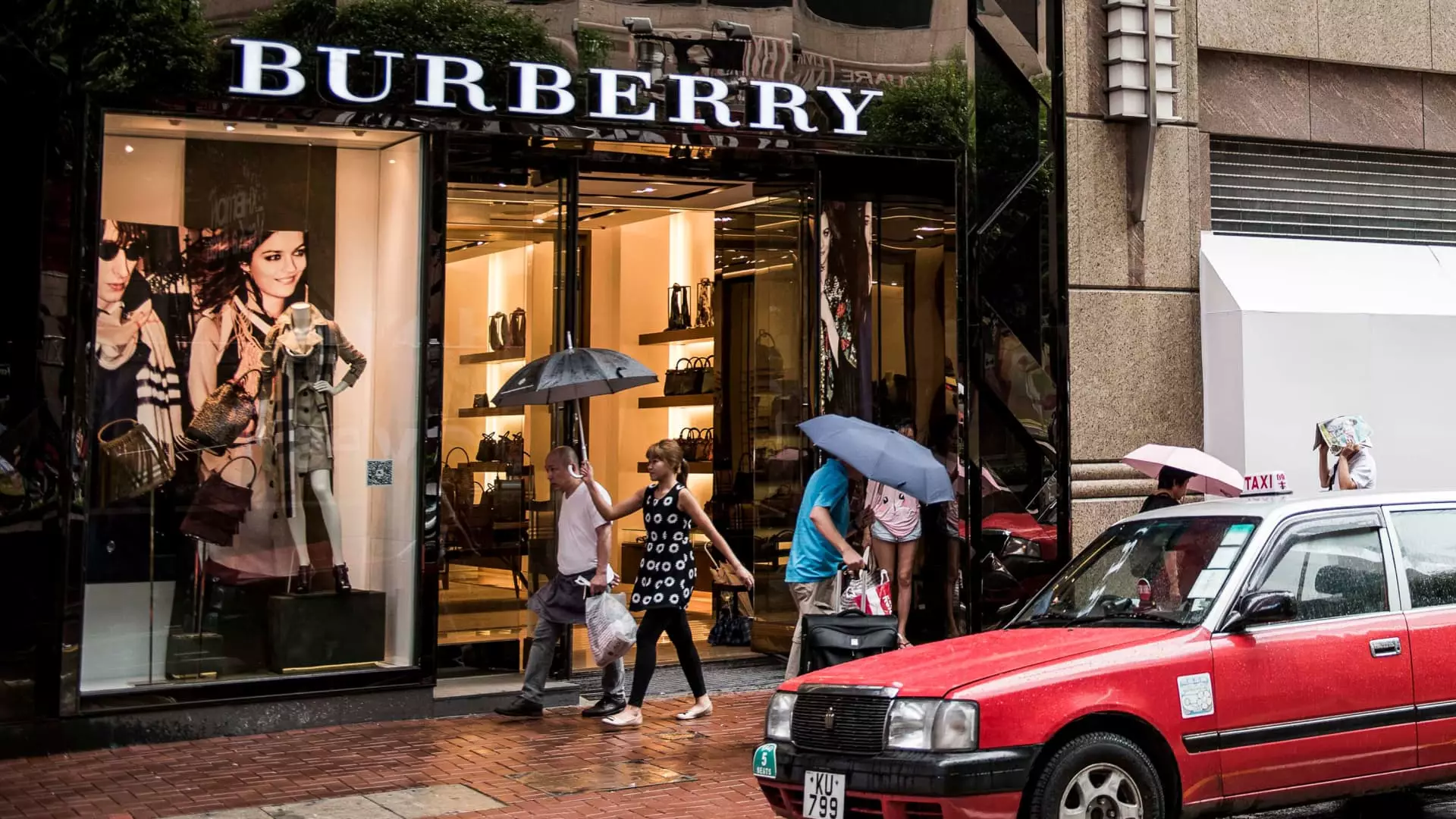Burberry, the iconic British luxury brand, witnessed a significant hit to its shares as they plummeted over 15% in early trading on Monday. This drastic drop came after the company issued a profit warning, announced the replacement of its CEO, and decided to suspend its dividend. The 168-year-old fashion house stunned investors with the revelation that if the current trading slowdown persists, it anticipates reporting an operating loss for the first half of the year and a full-year operating profit below market expectations.
Leadership Shake-Up
The abrupt departure of Jonathan Akeroyd, Burberry’s CEO, instigated a leadership shake-up within the company. Akeroyd, who stepped down “with immediate effect by mutual agreement with the Board,” was swiftly replaced by Joshua Schulman, an industry veteran who previously helmed Michael Kors and Coach. The sudden change at the top coupled with the bleak financial outlook sent shockwaves through the luxury fashion world and caused a frenzy among shareholders.
Decline in Retail Revenue
One of the most alarming revelations from the company’s trading update was the significant decline in retail revenue. Burberry disclosed that comparable store sales tumbled by 21% in the 12-week period ending on June 29, with regional disparities further exacerbating the situation. Sales in EMEIA (Europe, the Middle East, India, and Africa) dropped by 16%, while Asia Pacific and the Americas witnessed a 23% decrease in sales. These staggering figures underscore the challenges Burberry is facing in maintaining its market share and brand appeal.
Strategic Measures
In response to the current downturn, Burberry outlined a series of strategic measures aimed at reinvigorating the brand and reconnecting with its core customer base. The company emphasized the importance of cost savings, product rebalancing, brand communication refinement, and website revitalization. By focusing on delivering everyday luxury offerings and enhancing its digital presence, Burberry hopes to position itself for long-term growth and sustainability in a fiercely competitive market.
Burberry’s woes are further exacerbated by the prevailing macroeconomic uncertainties impacting its key markets. A combination of slowing luxury demand, cost-of-living crises in Europe and the U.S., and economic concerns in Asia have created a challenging environment for the brand. These external pressures, coupled with internal strategic missteps, have contributed to Burberry’s current predicament and necessitated urgent action to reverse the downward trend.
As Burberry navigates this turbulent period, the company faces the daunting task of regaining its footing in the luxury fashion landscape. With a new CEO at the helm and a renewed focus on customer-centric strategies, Burberry is striving to redefine its brand positioning and reignite consumer interest. The road to recovery will be fraught with challenges, but if Burberry can successfully execute its revitalization plans, it may emerge stronger and more resilient than before.
Burberry’s recent struggles serve as a stark reminder of the fragility of even the most storied luxury brands in an ever-evolving market. The company’s ability to adapt, innovate, and regain the trust of its customers will ultimately determine its fate in the fiercely competitive fashion industry. As Burberry charts a new course under fresh leadership, the world watches with bated breath to see if this luxury giant can rise from the ashes and reclaim its former glory.

